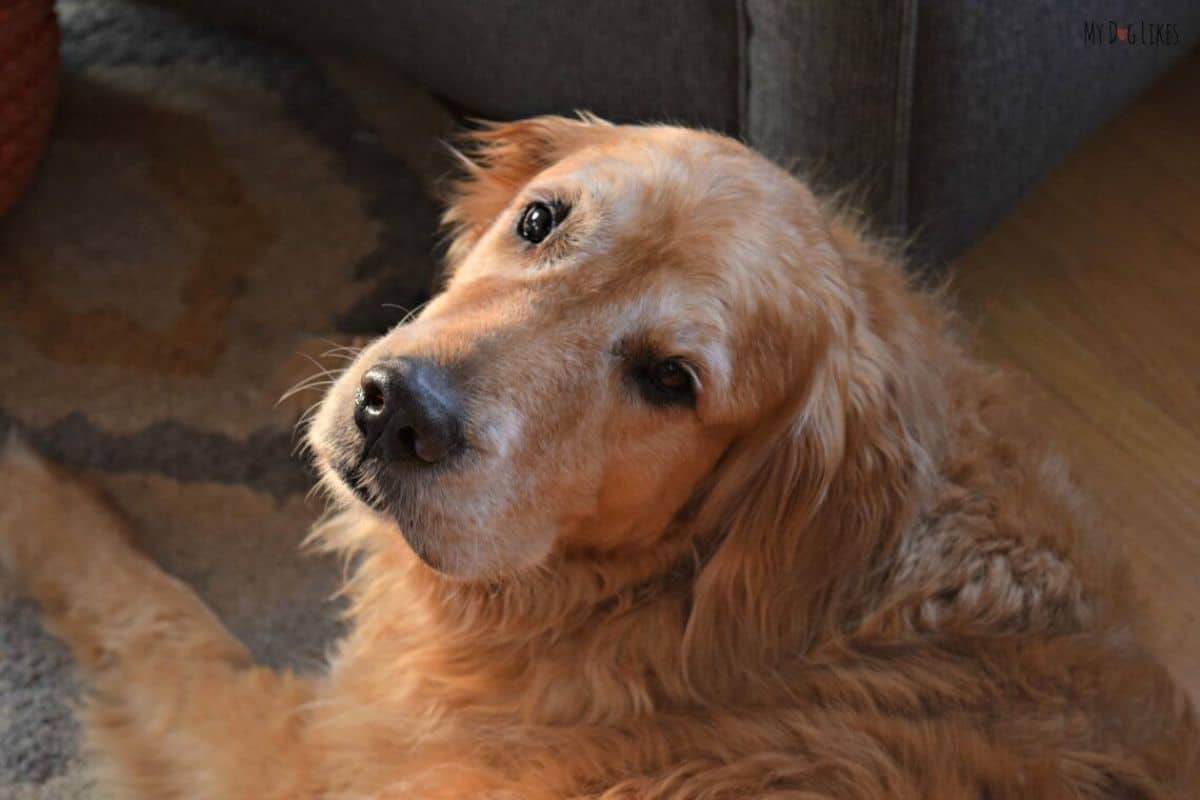This submit might comprise affiliate hyperlinks. We might earn cash or merchandise from the businesses talked about on this submit.
We’ve been fortunate (or unfortunate) with our senior canines. Linus had superior arthritis and started to have some minor points along with his hips. In his later years Stetson took some time to stand up off the ground.
Each our two elder statesmen handed earlier than they’d main hip points. As I mentioned each lucky and unlucky.
Nonetheless, we have now been half seen hip dysplasia in canines many instances. Our household canine, a Border Collie combine, my brother’s German Shepherd combine, three of my aunties Nice Pyrenees.
At present’s weblog submit covers Canine Hip Dysplasia (CHP) additionally known as Hip Dysplasia in Canines.

UPDATE: This submit was printed on MyDogLikes (initially on Animal Bliss) on August tenth, 2020. We just lately up to date and republished right here on PuppyInTraining.com.
DISCLAIMER: We’re not veterinarians. In case your canine is experiencing any well being points you must see your vet and get their skilled opinion. This weblog submit is for leisure functions solely.
Hip Dysplasia in Canines
The hip joint consists of a “ball” on the femoral bone, and a “socket” on the hip bone.
Hip dysplasia in canines, often known as Canine hip dysplasia (CHD), is when a canine’s hips don’t develop usually and the ball doesn’t match snugly into the socket.
This situation creates undue stress on the joint.
Joint instability develops, inflicting harm to the cartilage, gradual destruction of the joint, ache and swelling. CHD most frequently causes arthritis within the hips.
Regular Canine Hip Joints

Regular Canine Hips, Joel Mills, Licensed below Artistic Commons Attribution-Share Alike 3.0-2.5-2.0-1.0
Bilateral Canine Hip Dysplasia
Bilateral Hip Dysplasia, Joelmills. Licensed below Artistic Commons Attribution-Share Alike 3.0
What Causes Hip Dysplasia in Canines?
There are two theories about causes hip dysplasia in canines:
- Genetic: the canine is born with it. That is the most well-liked principle. The illness is handed on by the dad and mom, ensuing within the puppies carrying the genes for CHD. Not all canines with the gene present indicators of the illness.
- Environmental: the pet is simply too heavy, not exercised sufficient, or exercised an excessive amount of throughout its preliminary progress interval leading to developmental issues.
What are the Signs of Canine Hip Dysplasia?
- strolling with a limp
- issue getting up from a sitting place
- hops like a bunny when working
- reluctant to climb stairs
- a swaying gait
- ache within the hip
- has much less power and motion
Nonetheless, these signs are normally not evident until the canine reaches center age.
In excessive circumstances although, some canines exhibit apparent hip issues as early as 5-6 months of age.
The one option to discover out in case your canine undoubtedly has hip dysplasia is to get x-rayed by a vet.
My brother’s German Shepherd combine pet had an early limp and was recognized with hip dysplasia at a younger age.
It was hypothesized by his vet that the difficulty might have been from early neutering. As a result of he was a rescue pet he was neutered at 4 weeks outdated.
How is Canine Hip Dysplasia Recognized?
Analysis of the hip dysplasia in canines is finished with x-rays, which may let you know how dangerous the situation is, and what remedy is required.
X-rays taken once more at a later date may also gauge the development of the illness as a way to alter remedy, if needed.
What’s the Therapy for Canine Hip Dysplasia?
There are two choices for remedy: non-surgical administration or surgical procedure.
Non-surgical strategies might embody the usage of medicine to alleviate ache and irritation, dietary supplements, acupuncture, bodily remedy, chiropractic care, train, and weight administration.
If non-surgical administration will not be sufficient, surgical procedure could also be wanted, though most individuals see this as a final resort.
Surgical procedure will be very efficient because it corrects the underlying reason behind hip ache which is a malformed joint. There are two alternative ways of doing the surgical procedure.
One is prophylactic surgical procedure executed to forestall the development of arthritis.
The opposite is therapeutic surgical procedure which goals to deal with already arthritic hips.
You will have to speak to your Vet about what choices are greatest on your canine.
They are going to be capable to provide you with suggestions for remedy and can be capable to provide the particulars of the surgical procedure if wanted.
There are a number of surgical procedures obtainable however it’s past the scope of this text to enter element right here.
Can Canine Hip Dysplasia be Prevented?
Don’t overfeed your canine, particularly in the course of the rising part.
Extreme weight, or speedy weight achieve, creates extra stress on the joints, inflicting issues.
In case your canine has the CHD genes, this will decelerate the method significantly.
Don’t over-exercise your canine. Don’t let it leap up and down from heights.
Since hip dysplasia in canines is genetic, it is very important forestall additional breeding of the road.
Breed inventory might have the gene for CHD and never present any indicators.
In case your canine has canine hip dysplasia, she shouldn’t be bred.
In case you are shopping for a canine, search for a respected breeder. If one mother or father canine has hip dysplasia, the chance of it occurring within the litter is doubled.
Good breeders take care to forestall this example from occurring.
The pedigrees of canines will be checked to see whether or not they have been licensed as regular by the Orthopedic Basis For Animals (OFA) within the US.
Different organizations that verify for markers of hip normalcy in canines are PennHip and the GDC (Genetic Illness Management in Animals).
Giant breed canines have a larger likelihood of growing hip dysplasia, and potential homeowners could be sensible to take this precaution.
Does your canine undergo from hip dysplasia?
Do you’ve got any recommendation?
Save To Pinterest

Prime Picks For Our Puppies
- BEST PUPPY TOY
We Like: Calmeroos Pet Toy w/ Heartbeat and Warmth Packs – Excellent for brand spanking new puppies. Helps ease anxiousness of their new residence. - BEST DOG CHEW
We Like: Mighty Paw Naturals Bully Sticks – All of our puppies like to chunk, nip, and chew. We love utilizing Bully Sticks to assist divert these undesirable behaviors. - BEST DOG TREATS
We Like: Loopy Canine Practice-Me Treats – We use these as our high-value treats for our information canine puppies. - BEST FRESH DOG FOOD
We Like: The Farmer’s Canine – A pair months in the past we began feeding Raven recent pet food and he or she loves it! Get 50% off your first order of The Farmer’s Canine.
Try extra of our favorites on our New Pet Guidelines.



